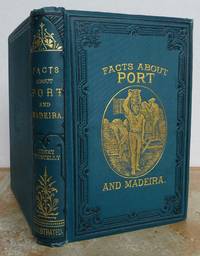
The Thermodynamic Properties of Nitrogen from 65 to 2000 K with Pressures to 10,000 Atmospheres
by Jacobsen, R. T
- Used
- Hardcover
- Condition
- Excellent condition - former owner's name on first page/none
- Seller
-
Coeur d'Alene, Idaho, United States
Payment Methods Accepted
About This Item
The Thermodynamic Properties of Nitrogen from 65 to 2000 K with Pressures to 10,000 Atmospheres
Doctoral Thesis by R. T. Jacobsen
Washington State University Program in Engineering Science, in partial fulfillment of the requiremenrs for the degree of Doctor of Philosophy
1972
Hardcover - no jacket (as issued)
8 5/8 x 11 inches, 202 pages
see Table of Contents
Jacobsen, Richard T.; Stewart, Richard B. (1973), "Thermodynamic Properties of Nitrogen Including Liquid and Vapor Phases from 63 K to 2000 K with Pressures to 10,000 Bar" (pdf), Journal of Physical and Chemical Reference Data (National Institute of Standards and Technology) 2 (4): 757–922, Bibcode:1973JPCRD...2..757J, doi:10.1063/1.3253132, ISSN 0047-2689
Nitrogen is a chemical element with symbol N and atomic number 7. It is the lightest pnictogen and at room temperature, it is a transparent, odorless diatomic gas. Nitrogen is a common element in the universe, estimated at about seventh in total abundance in the Milky Way and the Solar System. On Earth, the element forms about 78% of Earth's atmosphere and as such is the most abundant uncombined element. The element nitrogen was discovered as a separable component of air, by Scottish physician Daniel Rutherford, in 1772.
Many industrially important compounds, such as ammonia, nitric acid, organic nitrates (propellants and explosives), and cyanides, contain nitrogen. The extremely strong triple bond in elemental nitrogen (N=N) dominates nitrogen chemistry, causing difficulty for both organisms and industry in converting the N2 into useful compounds, but at the same time causing release of large amounts of often useful energy when the compounds burn, explode, or decay back into nitrogen gas. Synthetically produced ammonia and nitrates are key industrial fertilizers and fertilizer nitrates are key pollutants in causing the eutrophication of water systems.
Outside the major uses of nitrogen compounds as fertilizers and energy-stores, nitrogen is a constituent of organic compounds as diverse as Kevlar fabric and cyanoacrylate "super" glue. Nitrogen is a constituent of molecules in every major pharmacological drug class, including antibiotics. Many drugs are mimics or prodrugs of natural nitrogen-containing signal molecules: for example, the organic nitrates nitroglycerin and nitroprusside control blood pressure by being metabolized to nitric oxide. Plant alkaloids (often defense chemicals) contain nitrogen by definition, and thus many notable nitrogen-containing drugs, such as caffeine and morphine are either alkaloids or synthetic mimics that act (as many plant alkaloids do) on receptors of animal neurotransmitters (for example, synthetic amphetamines).
Nitrogen occurs in all organisms, primarily in amino acids (and thus proteins), in the nucleic acids (DNA and RNA) and in the energy transfer molecule adenosine triphosphate. The human body contains about 3% by mass of nitrogen, the fourth most abundant element in the body after oxygen, carbon, and hydrogen. The nitrogen cycle describes movement of the element from the air, into the biosphere and organic compounds, then back into the atmosphere.
______________________
The only chemical elements which are stable multi atom homonuclear molecules at standard temperature and pressure (STP), are hydrogen (H2), nitrogen (N2) and oxygen (O2); plus two halogens, fluorine (F2) and chlorine (Cl2). These gases, when grouped together with the monatomic noble gases; which are helium (He), neon (Ne), argon (Ar), krypton (Kr), xenon (Xe) and radon (Rn) ; are called "elemental gases". Alternatively they are sometimes known as "molecular gases" to distinguish them from molecules that are also chemical compounds.
The speed of a gas particle is proportional to its absolute temperature. The volume of the balloon in the video shrinks when the trapped gas particles slow down with the addition of extremely cold nitrogen.
In 1787, the French physicist and balloon pioneer, Jacques Charles, found that oxygen, nitrogen, hydrogen, carbon dioxide, and air expand to the same extent over the same 80 kelvin interval. He noted that, for an ideal gas at constant pressure, the volume is directly proportional to its temperature:
V1/T1=V2/T2
Details
- Bookseller
- Worldwide Collectibles
(US)
- Bookseller's Inventory #
- biblio1140
- Title
- The Thermodynamic Properties of Nitrogen from 65 to 2000 K with Pressures to 10,000 Atmospheres
- Author
- Jacobsen, R. T
- Format/Binding
- 8 5/8 x 11 inches, 202 pages
- Book Condition
- Used - Excellent condition - former owner's name on first page
- Jacket Condition
- none
- Quantity Available
- 1
- Edition
- Doctoral Thesis
- Binding
- Hardcover
- Publisher
- Washington State University
- Place of Publication
- Pullman, WA
- Date Published
- 1972
- Keywords
- Nitrogen, Chemistry
Terms of Sale
Worldwide Collectibles
Payments are expected within 10 days unless prior arrangements are made.
About the Seller
Worldwide Collectibles
About Worldwide Collectibles
Glossary
Some terminology that may be used in this description includes:
- Jacket
- Sometimes used as another term for dust jacket, a protective and often decorative wrapper, usually made of paper which wraps...




